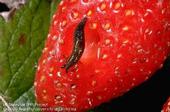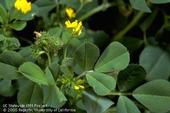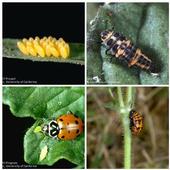
Snails and slugs can be destructive pests in gardens and landscapes when they devour entire seedlings or chew holes in leaves, flowers, fruit, and even the bark of plants.
Manage these pests by getting rid of their hiding places, setting up traps, or planting resistant plants.
For more information about effective ways to manage snails and slugs, read the newly revised Pest Notes: Snails and Slugs by Cheryl Wilen, Area IPM Advisor, San Diego, Orange, and Los Angeles counties; and Mary Louise Flint, Extension Entomologist Emerita, UC Davis and UC IPM.

In mid-March, many people use clover-themed decorations in preparation for St. Patrick's Day. Many gardens and landscaped areas are “decorated” with clovers too, especially with recent rains and mild temperatures in much of California. For some people, clovers are considered weeds, but others enjoy the green color they bring!
Clovers begin to germinate in the fall and continue throughout winter and early spring. Their bright green leaves can blemish the look of lawns and may be unsightly when found in ornamental plantings.
Clovers growing in lawns or landscapes are often a sign of low soil nitrogen, so changing fertilization can help prevent their growth. Read the UC IPM publication
![Green lacewing life cycle.[J.K. Clark]](https://ucanr.edu/blogs/UCIPMurbanpests/blogfiles/43911small.png)
Last week, we discussed some common beneficial predators that help control pests on garden and landscape plants. One such predator you might find, is a lacewing. In fact, you may have seen adult lacewings on or near porchlights in the evening, since these insects are attracted to lights.
Green Lacewings
Green lacewing (Chrysopa spp., Chrysoperla spp.) adults are green, soft-bodied insects with golden eyes and four membranous wings. Their larvae are pale with dark markings and a tapered tail, and measure 1/8 to 4/5 of an inch long.
There are several species of green lacewings; some species have predaceous adults, while others feed only on...
![Attendees from Retail IPM Workshop.[A. Schellman]](https://ucanr.edu/blogs/UCIPMurbanpests/blogfiles/43860small.png)
[From the May 2017 issue of the UC IPM Retail Newsletter]
Retail nursery and garden center employees play an important role in communicating pest management information to gardeners and the public. The UC Statewide IPM Program (UC IPM) strives to help retailers stay current on emerging pest-related topics facing California that help consumers effectively manage pests.
As part of this effort, UC IPM partnered with several UC Cooperative Extension Advisors and Specialists to offer three regional train-the trainer workshops in 2016 and early 2017. A total of 188 participants from 41 retail...

You're probably familiar with lady beetles (aka lady bugs), common beneficial insect predators that prey on aphids and other soft-bodied insects. However, lady beetles are not the only beneficial predators that can be found in your garden and landscape.
Other “natural enemies” such as assassin bugs, minute pirate bugs, lacewings, predatory wasps, spiders, and predaceous ground beetles attack and kill pests. In some cases, both the adults and larvae are predators. It's important to recognize the different life stages of these beneficial predators so you know they are helping control pests and not attacking your plants.
Protect beneficials...


